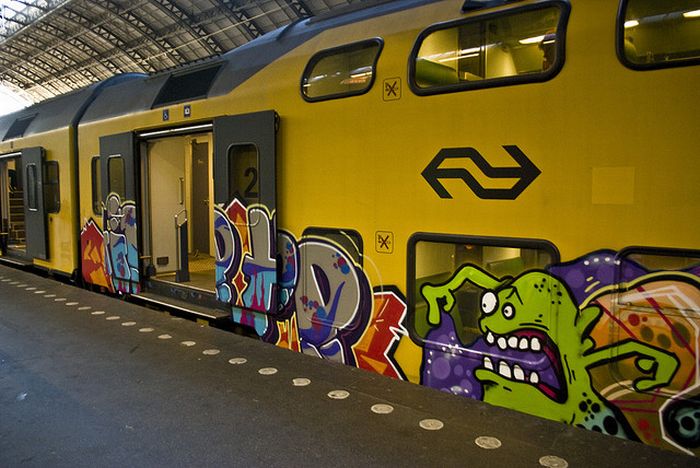|
|
Train Graffiti
|
Anonymous artists
Graffiti artists constantly have the looming threat of facing consequences for displaying their graffiti. Many choose to protect their identities and reputation by remaining anonymous.
With the commercialization of graffiti (and hip hop in general), in most cases, even with legally painted "graffiti" art, graffiti artists tend to choose anonymity. This may be attributed to various reasons or a combination of reasons. Graffiti still remains the 1 of 4 hip hop elements that is not considered "performance art" despite the image of the "singing and dancing star" that sells hip hop culture to the mainstream. Being a form of visual art, it might also be said that many graffiti artists still fall in the category of the introverted archetypal artist.
Banksy is one of the world's most notorious and popular street artist who continues to remain faceless in today's society. He is known for his political, anti-war stencil art mainly in Bristol, England but his work can be seen anywhere from Los Angeles to Palestine. In the UK, Banksy is the most recognizable icon for this cultural artistic movement and keeps his identity a secret to avoid arrest. Much of Banksy's artwork can be seen around the streets of London and surrounding suburbs, though he has painted pictures around the world, including the Middle East, where he has painted on Israel's controversial West Bank barrier with satirical images of life on the other side. One depicted a hole in the wall with an idyllic beach, while another shows a mountain landscape on the other side. A number of exhibitions have also taken place since 2000, and recent works of art have fetched vast sums of money. Banksy's art is a prime example of the classic controversy: vandalism vs. art. Art supporters endorse his work distributed in urban areas as pieces of art and some councils, such as Bristol and Islington, have officially protected them, while other officials have deemed his work to be vandalism and have removed it.
|
|









